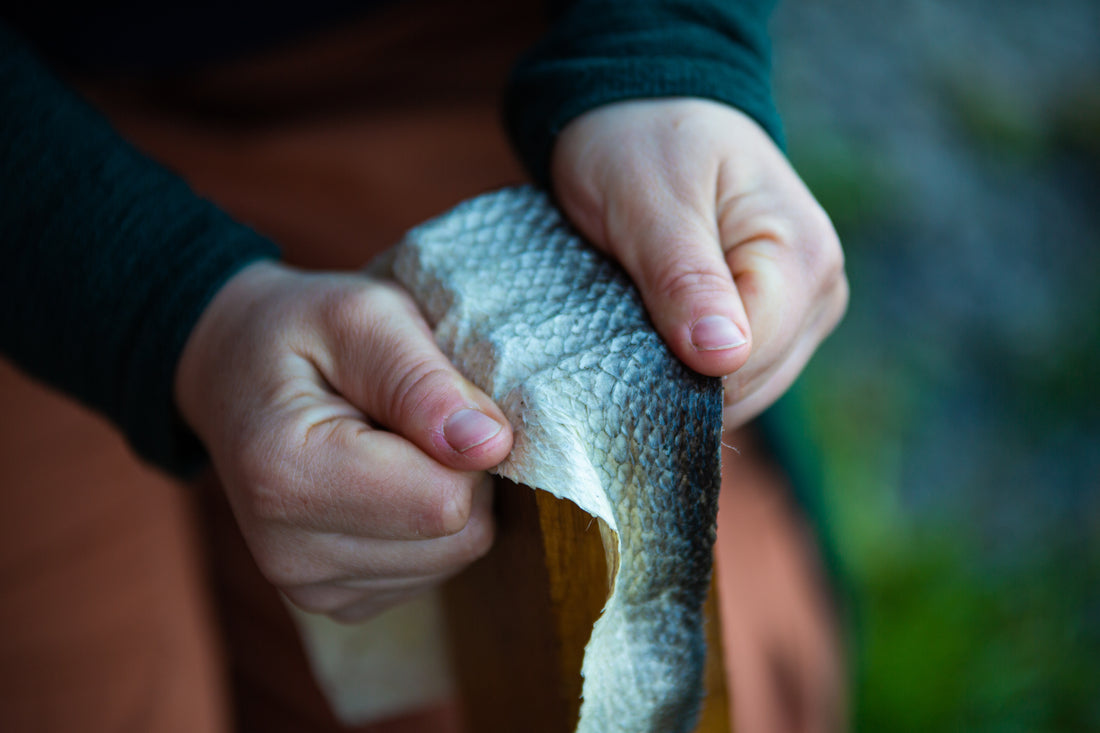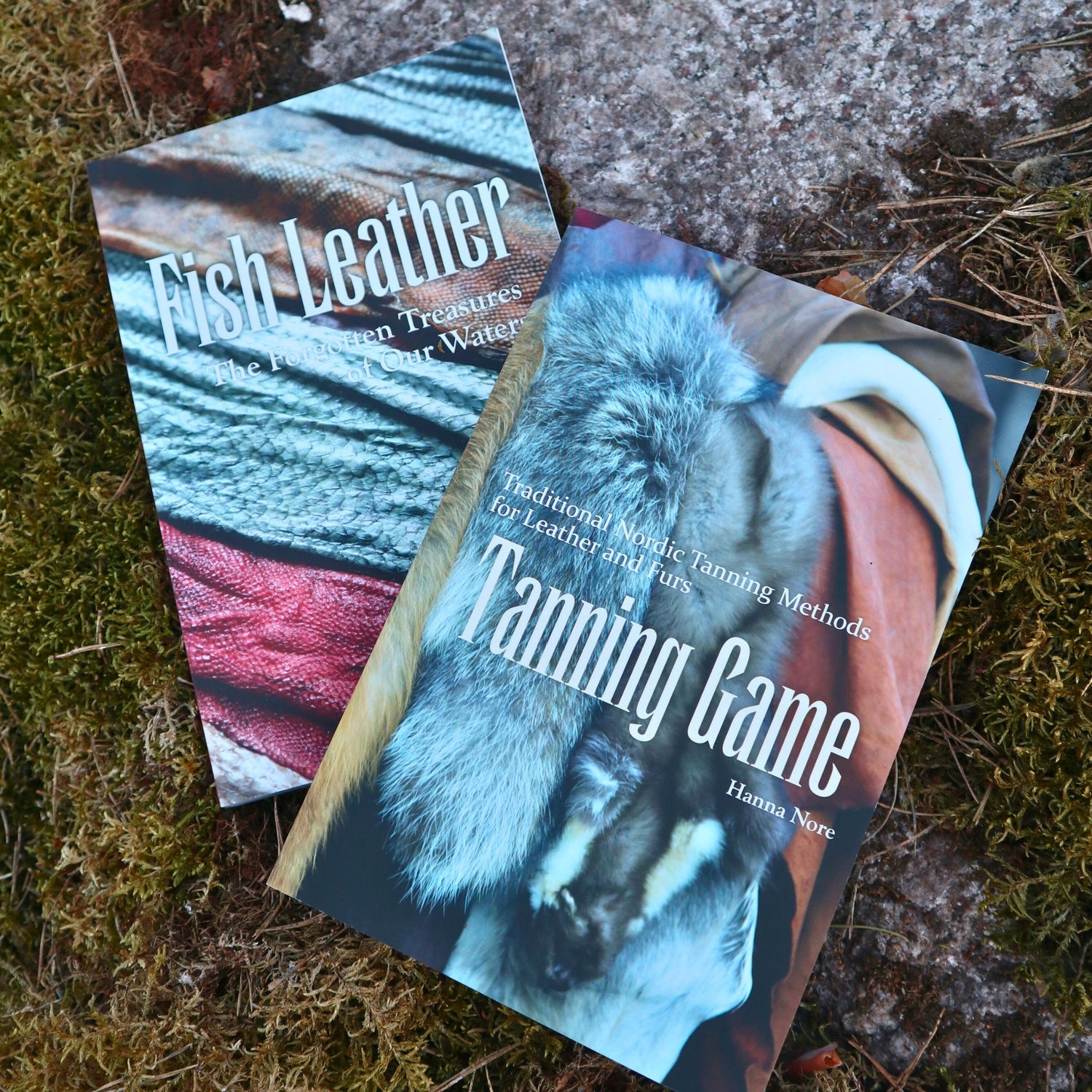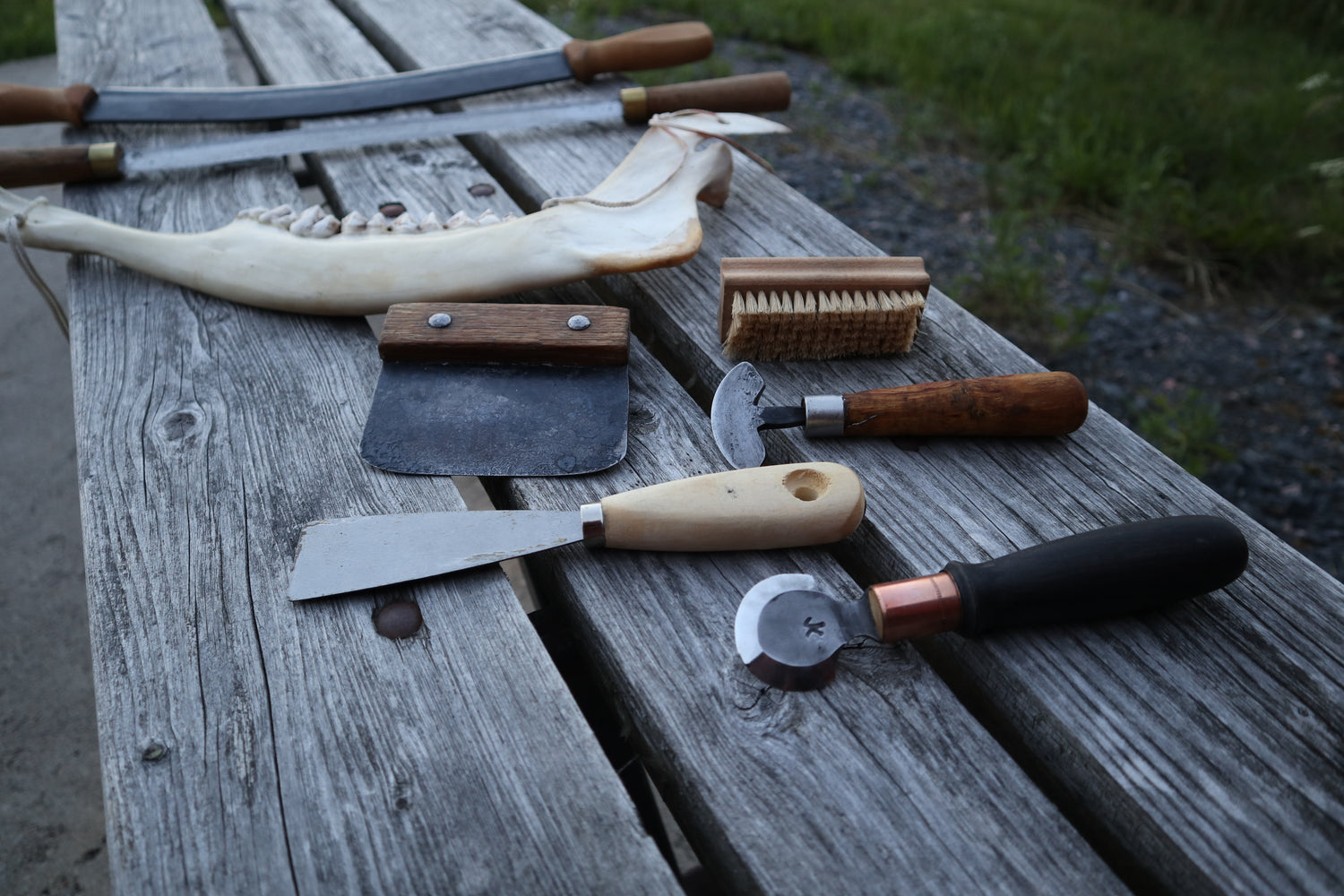
Unveiling Fish Leather
Hanna NoreFishing has always been an important resource for hunter-gatherer cultures living near bodies of water. The native peoples of the northern hemisphere, particularly in northern parts of Asia, Scandinavia, Alaska, and Canada, have a long tradition of refining fish skin into a desirable and durable material: leather. Large fish exhibiting a beautiful sheen are particularly prized for their skins.
Fish leather has been used to make shoes, coats, sacks, bags, straps, musical instrument skins, and more. The knowledge of preparing fish leather was passed down from one generation to the next, but disappeared over time and was almost forgotten.
I believe it’s time for another surge of interest in fish leather! I hope my new book, "Fish Leather - The Forgotten Treasures of Our Waters," helps you discover the beauty and durability of fish leather, the age-old knowledge of tanning it, and inspires you to make some yourself.

Modern consumers are interested in ecological and ethical products and regularly raise questions about provenance and production chain transparency. Many prefer products that are domestically made from locally sourced hardy and durable materials, with an environmentally conscious production process. This presents an ideal opportunity for fish leather!
Some might be surprised by this suggestion. The commercial leather industry has frequently faced criticism for its use of heavy metals such as chromium and other chemicals, leading to concerns about water pollution, the safety and working conditions of the labor force, and the health of the surrounding environment. But there is another way.

As a traditional tanner, the safety of the tanning process is extremely significant for me from a threefold perspective: for myself as a tanner, for the consumer, and most importantly, for nature. Traditional tanning, the type of techniques presented in this book, is a crafting tradition that emphasizes the use of natural materials. One of the basic tenets of this tradition is that every part of an animal is valuable and useful; nothing should go to waste. Traditional tanning is a method for tanning raw skins completely by hand, utilizing natural chemicals from our own surroundings.
In "Fish Leather - The Forgotten Treasures of Our Waters," I introduce different eco-friendly methods for tanning fish skins into leather and showcase examples of beautiful, durable products that utilize fish leather as a material. I invite you on a journey of discovery and innovation!

Hanna Nore
Hanna Nore is a master traditional tanner, teacher of traditional tanning methods and the author of Fish Leather and Tanning Game. She lives and works on Kimito Island in the Finnish archipelago.


